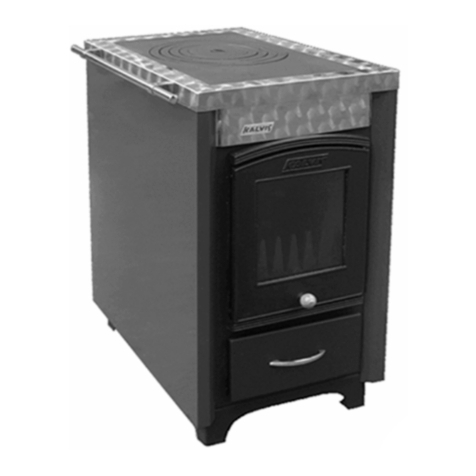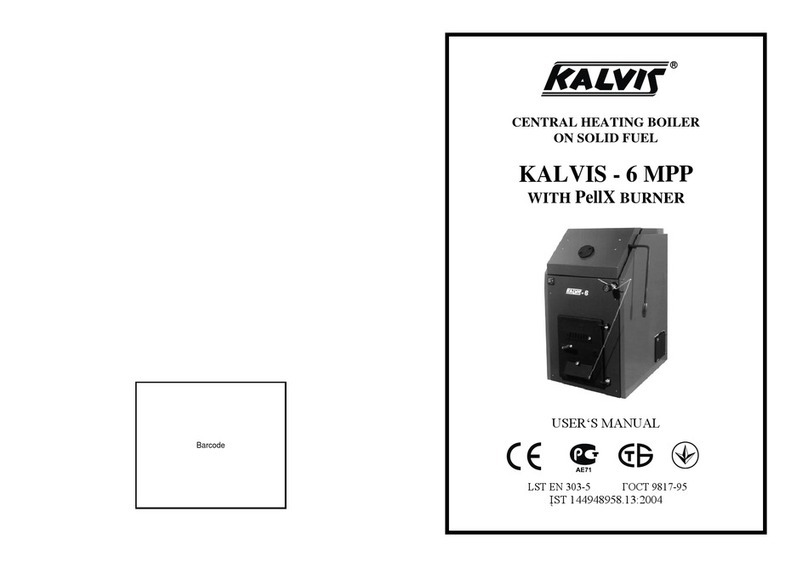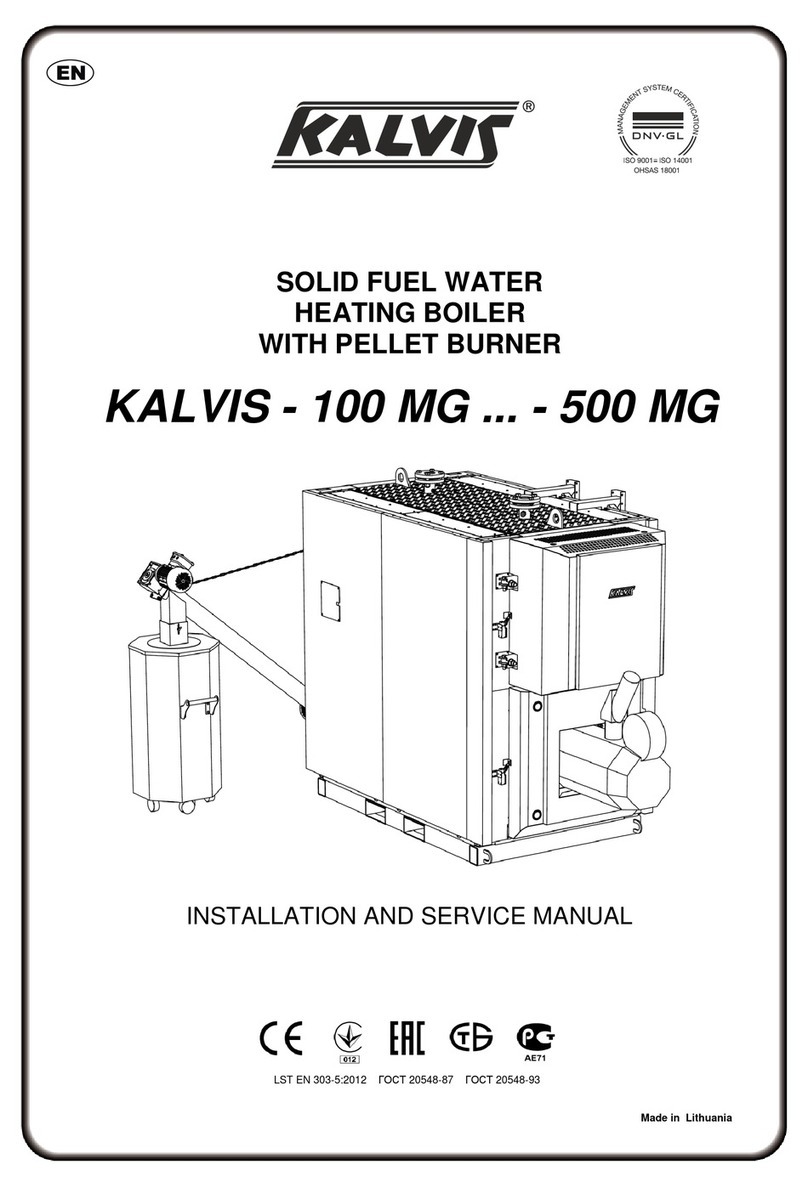- 10 -
If installing this boiler outside Lithuania, it is necessary to observe all local
rules based upon European and national standards.
Before connecting boiler to heating system and chimney, take into
consideration the fact that during operation it will have to be cleaned, adjusted etc.
For boiler maintenance as well for fire prevention necessary minimum
distances to walls and ceiling are given in fig. 2.
Note. Boilers are manufactured in the right positioning option, but user, for own
convenience, can reinstall direction of opening the front decorative door (27)
and firing valve handle (6) into the opposite side of the boiler. Place of
installation of electric heating elements (3), cooling coil (4) and exhauster
control panel is provided on the both sides of the boiler.
6.1. Fire prevention requirements:
•Put boiler onto non-combustible base;
•If boiler is connected to chimney through metal pipes, they have to be made of
no thinner than 1,5 mm metal sheet and coated with heat insulation material.
Attention! If chimney draught is too strong, using chips, slivers, hards or other
powdery materials as fuel, during its loading or after fuel burns out and its
remains are shaken, sparks can flow out of the chimney.
If for roof or building constructions easily-combustible materials are used,
or other similar design buildings, building materials, fuel etc. are located
closer than 20 m away from the chimney, use of fuel of mentioned kinds ir
strictly prohibited!
6.2. Requirements for chimney
Options for chimney construction and boiler connection to chimney are shown
in fig. 3.
Requirements:
•Chimney draught has to be no less than it is specified in the main technical
specification table (see page 3);
•Chimney hole has to be no less than 120 x 250 mm in cross-section;
•Boiler needs separate chimney hole. Nothing else can be connected into the
same hole;
•If chimney is connected with extra elbow, it has to have no less diameter that
the cross-section of smoke escaping from boiler hole, with bending radii no less
than 100 mm;
•Pipe between boiler flue pipe and chimney has to be no longer than 1,5 m and
has to go up towards chimney, providing the possibility for its cleaning;
•Gaps at butting and entrance into chimney places have to be excellently sealed;
It is necessary to know that:
•Smoke, after getting into chimney from boiler flue pipe, continues cooling,
steam contained in the smoke condense by settling on chimney walls, especially
in unheated loft and external part of the chimney;
- 23 -
KALVIS - 2-30U, -2-40U 2012.02.06
7.6. Boiler cleaning
Ash, accumulated under the firegrate may prevent air supply to the
combustion chamber. So, no rarely than every second firing (every second
day), remove ash from the ash box and scoop remaining ash from ashtray.
In order to assure efficient boiler operation, it is necessary to periodically
clean sooth from internal surfaces of the boiler. Intervals between cleanings
depend on fuel quality (especially moisture), burning intensity, chimney
draught and other circumstances. It is recommended to clean boiler heat
exchanger and combustion chamber when sooth layer is up to 3 mm thick, but
no rarely than 2 - 3 times per month. For cleaning take of service cover (5) and
thoroughly, with the help of scraper and brush, clean internal surfaces of the
boiler.
Remove ash and sooth after having unscrewed bottom cleaning cover (21).
In order to remove hardened scale, it is recommended to use chemical
cleaners (Swedish „Fauch 300“ or similar).
It is recommended to clean chimney no rarely than every year and
necessarily before start of the heating season.
Attention! We recommend to remove exhauster before cleaning the boiler in
order it was easier to clean the flue pipe and to clean exhauster’s impeller.
Note. During first firing of the boiler of after a long period of non-firing,
chimney can block smoke. In this situation, when firing the boiler, open
chimney or boiler chimney connection cleaning door and through it
carefully insert lit crumpled paper. Close door after paper burns out.
Draught should improve.
7.7. Risk analysis and its elimination methods
Safety valve and expansion vessel serve as protection from overpressure in
the boiler.
Don’t overheat (boil) water in the boiler.
Water overheating may be caused by: too intense combustion, water level
drop or circulation absence in the system.
Fault Reasons What to do
Boiler overheats
Too intense combustion.
Electric power loss (for
systems with forced
circulation).
Close air supply, observe water
temperature in the boiler.
After temperate drops, return to normal
combustion mode.
Electric power
loss
Call qualified specialist.
In winter, when there is no electric power
for a longer time and frost risk, discharge
water from the system.
Example
































